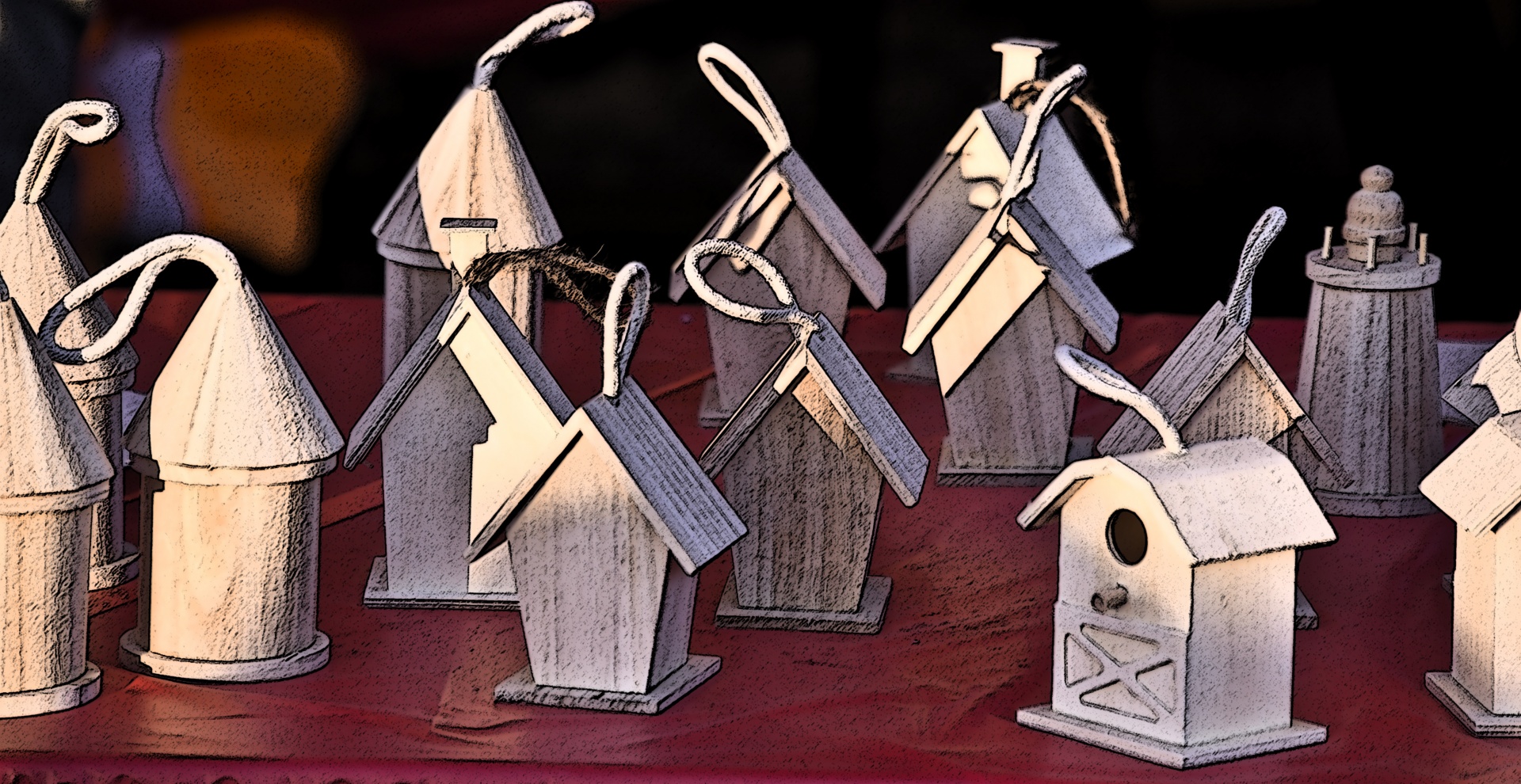What do you want in a house?
Birds are like people, they have specific needs for shelter. This site will concentrate on a few birds who will actually nest in a house that people build or buy in the coastal area of South Carolina. Not all birds will use a birdhouse.
Cavity nesting birds are the common residents of birdhouses. They will find snags or holes in trees for homes, some will actually make a hole. Such birds are bluebirds, purple martins, house wrens, chickadees, tree swallow, house sparrows, wood ducks, some owls, woodpeckers, titmice and nuthatches.
Specific birds have specific requirements for their homes. The hole size, construction material and location are very important. If a hole is too big predators can get to the occupants. Rats, cats, raccoons and possums have been known to steal the eggs. A hole low to the ground gives snakes access to the eggs. A hole too high from the floor of the birdhouse and fledglings can not make a necessary exit. Holes that are too big let larger birds invade nests.
Location of a bird house is extremely important. Generally, bird houses should be 5 ft off of the ground. 20 ft is a good distance from feeders and birdbaths. Good place to place birdhouses are the tops of poles or attached to tree trunks. Avoid places where people walk. It is even important to know what direction (N,S,E,W) to face the house. They should face away from prevailing winds.
The material and thickness of the wood is important. It is important that the house look natural. The thickness of the wood is important because it has to insulate the house against the weather. Also, the interior can’t be too smooth. The baby birds need groves or rough wood to help their climbing.
A size of 5x5 inches for the bottom of the house and a depth of 5 to 6 inches with a height of 10 to 12 inches is a good general size for most birds. Different size holes attract different birds. Songbirds usually like a 1 ½ hole while Wrenns like a 1 ¼ inch hole. The roof should protect the birds from the weather and be slanted for drainage. Generally small birds need small houses and large birds need large houses. If a house is too big it may not be warm enough for the babies. If a bird usually has a big family it will need more space. Regardless of the size, a birdhouse needs proper ventilation for temperature control.
Color is not as important as other characteristics but paint should not be dark because it attracts heat. Also, it is important that a birdhouse have holes to drain water and let air into the house. A removable roof or panel is good so the house can be cleaned.
Only use a perch on the house if it is used by the bird that you are trying to attract. A perch can make it easy for a squirrel or other enemy to enter.
Birds like to add nesting materials to their houses. Things like twigs, moss, hair, pine needles, yarn, small pieces of fabric, etc… can be laid outside for the birds to choose and add to their houses.
Specific birds can be attracted by making sure their favorite foods and habitats are available. For instance, bluebirds like meal worms and woodpeckers like suet.
The inside of the houses should be cleaned with a mild solution of bleach each year. This will kill mites and other undesirable things that might be growing in the house.
Hole size Floor space Entrance height Roof height shape of hole Distance hole is from floor
Important things to consider:
Location
Food
Water
Landscaping/Habitat
Direction facing
Construction material
Size of house
Have Fun!
The Team at Educator Pages ![]()
